One-half of "Bonnie and Clyde," Clyde Barrow committed robberies and murders with Bonnie Parker until they were killed by a posse of lawmen on May 23, 1934.
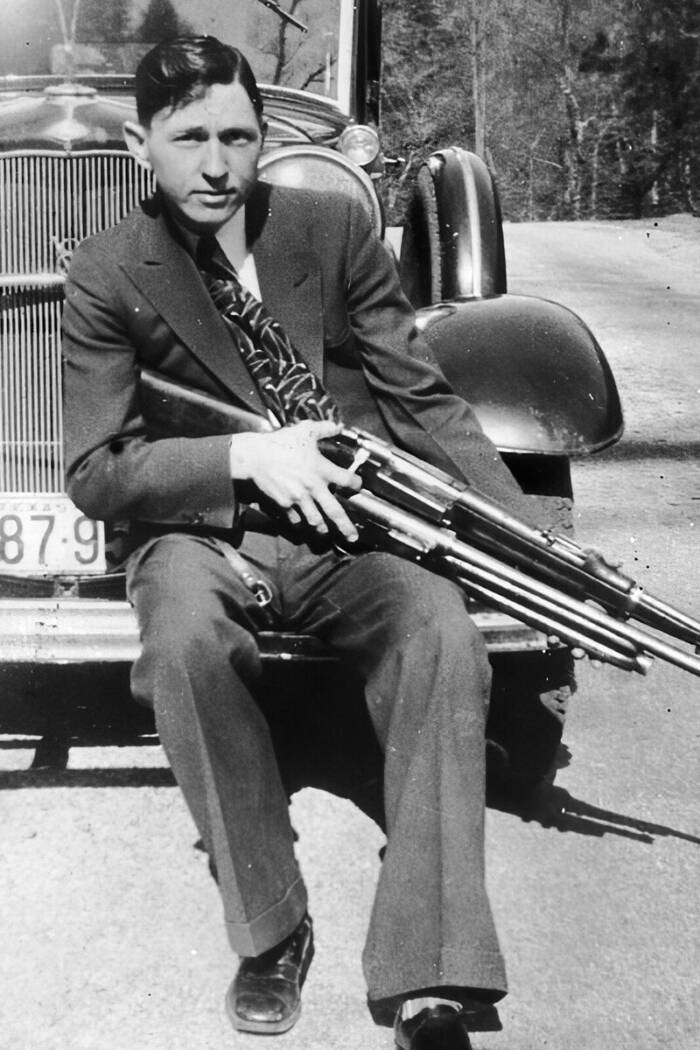
Public DomainClyde Barrow, infamous for a string of robberies and murders alongside Bonnie Parker and other associates throughout the early 1930s, posing with a shotgun. Circa 1933.
As a boy, Clyde Barrow wanted to be a musician. Instead, he became part of the most infamous crime duo in U.S. history: Bonnie and Clyde.
He and his romantic partner, Bonnie Parker, spent the early 1930s bouncing from one town to the next, robbing banks and small businesses, stealing cars, and killing anyone who got in their way. Their crime spree captured the American imagination and newspapers eagerly printed their exploits as law enforcement officers tried to track down the notorious couple.
Bonnie and Clyde’s lives came to a bloody end on May 23, 1934, when police cornered them on a rural road in Bienville Parish, Louisiana. The criminal couple died in a hail of bullets — and became outlaw legends.
So who was Clyde Barrow, the man behind Bonnie and Clyde?
The Humble Beginnings Of Clyde Barrow
Born on March 24, 1909, in Telico, Texas, Clyde Chestnut Barrow grew up poor in a farming family, the fifth of seven children. When his family moved to Dallas in 1922, they were so destitute that they lived in tents.
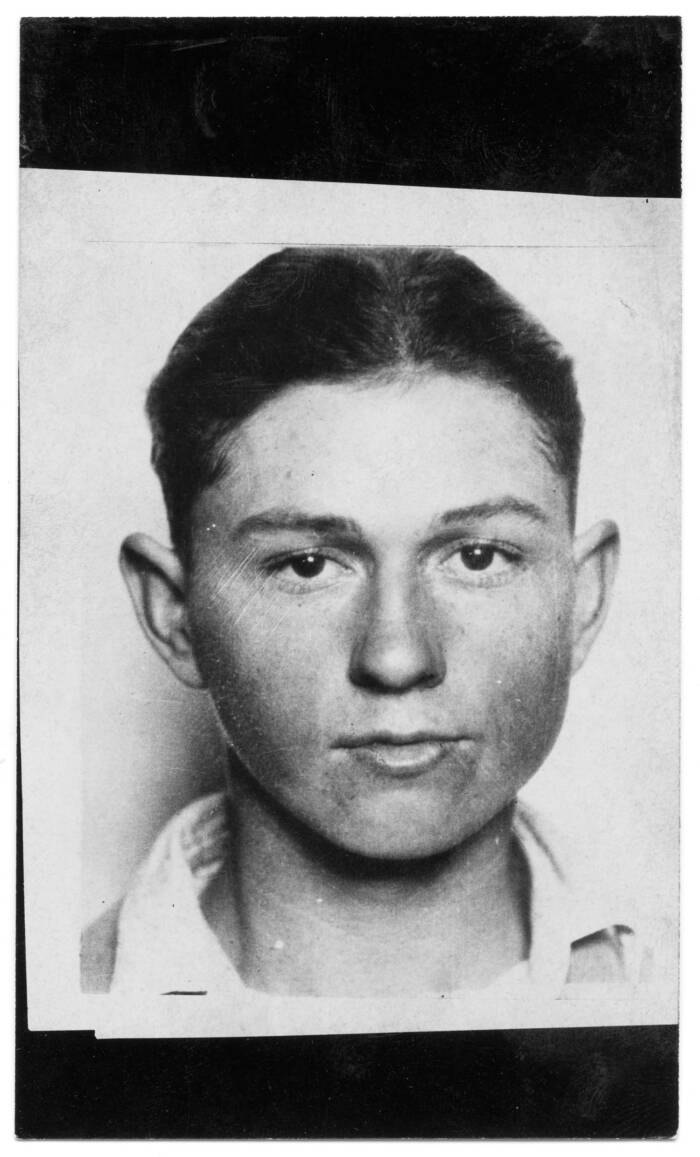
Dallas Municipal ArchivesAn undated mugshot of Clyde Barrow.
Though Clyde attended school until he was 16 — and toyed with the idea of becoming a musician after learning to play the guitar and the saxophone — he dropped out in the mid-1920s. Then, Clyde began his first forays into a life of crime under the influence of his older brother, Buck Barrow.
Clyde started out with petty theft, sometimes stealing materials that his father could resell, and then graduated to stealing cars and carrying out armed robberies. According to Clyde’s mother, police often brought him in for questioning and tried to “bully” him into confessing to various crimes — but Clyde was never charged with anything during this time.
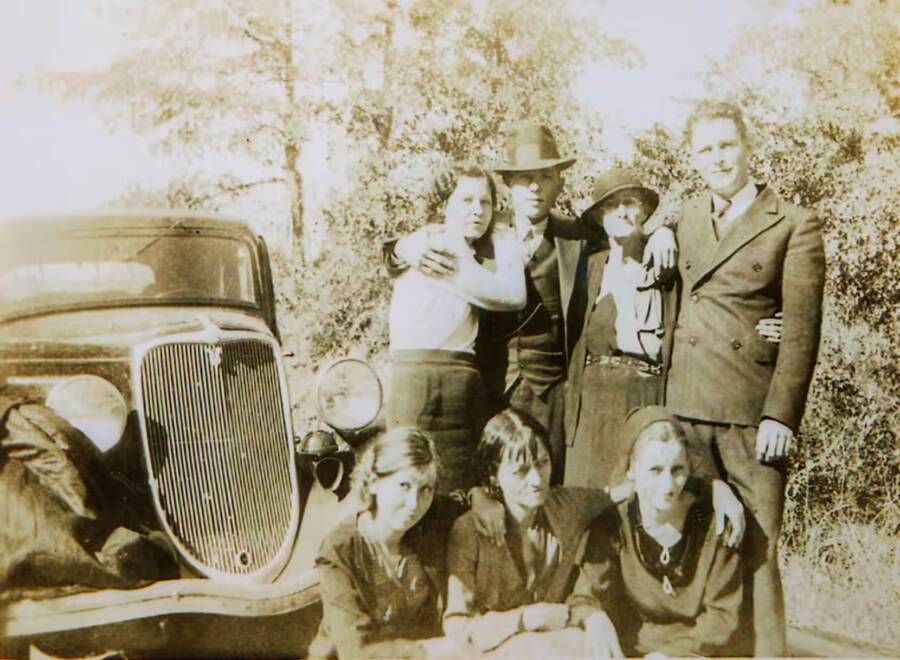
Buddy BarrowThe Barrow family in an undated photograph. Clyde Barrow is in the top row, second from left.
“After he was picked up so many times he came to have a hatred for the law, and figured it didn’t do much, if any, good to try to do right,” she wrote in an unpublished manuscript, as reported by The Dallas Morning News.
But everything changed for Clyde Barrow in 1930. That was the year he went to prison. And it was also the year that he met Bonnie Parker.
The Beginning Of “Bonnie And Clyde”
In January 1930, 20-year-old Clyde Barrow met 19-year-old Bonnie Parker at either her brother’s home or a friend’s home. Though Parker was married (her husband was in jail at the time), sparks flew between them immediately.
“It all came about so simply, as such momentous and life-changing things often do,” Bonnie’s mother wrote in The True Story of Bonnie & Clyde.
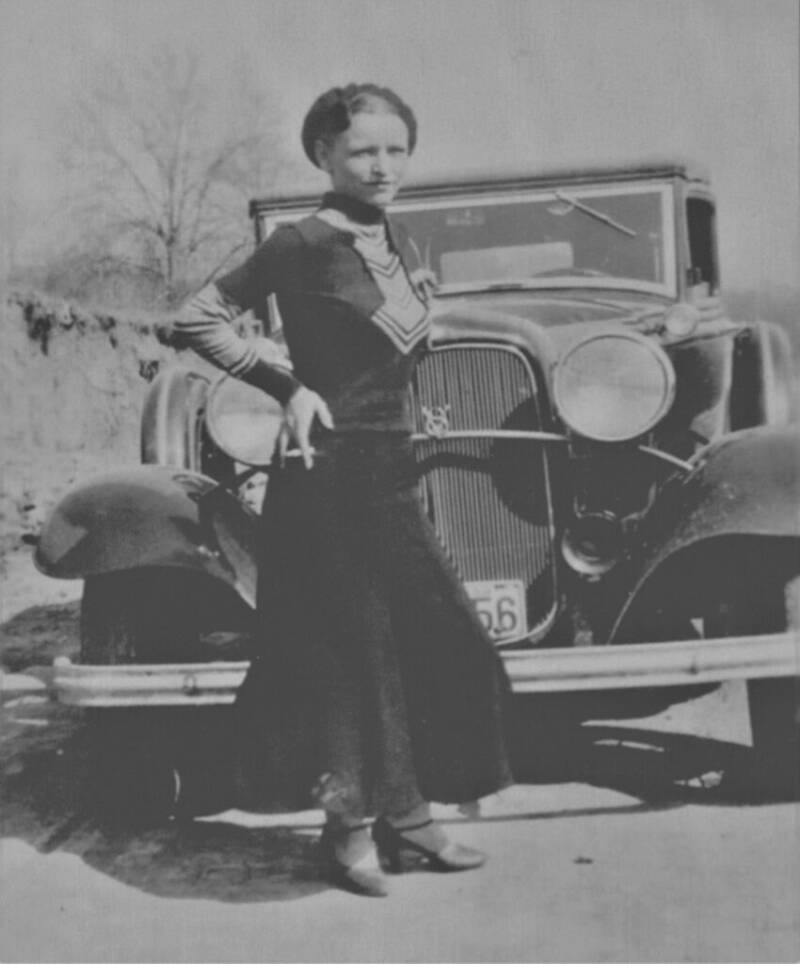
Public DomainBonnie Parker was married when she met Clyde Barrow, but the two quickly fell in love with each other.
But their romance had only just begun when Clyde’s life of crime caught up with him. Shortly after they met, Clyde was arrested for car theft and burglary. Thanks to a gun smuggled in by Bonnie, he was able to briefly escape from McLennan County Jail. But Clyde didn’t get far. Not only was he captured, but the authorities added 14 years to his sentence.
Clyde was then sent to Eastham Farm in the Texas Prison System in Houston. There, he was subjected to hard labor and repeatedly sexually assaulted by a fellow inmate. According to Go Down Together: The True, Untold Story of Bonnie and Clyde by Jeff Guinn, Clyde eventually beat his abuser to death with a lead pipe. Another inmate, who was already sentenced to life, agreed to cover for Clyde so he wouldn’t get in trouble.
Despite this, Clyde Barrow was still miserable behind bars. Eventually, he had another inmate chop off two of his toes in an “accident” in a bid to escape work in the cotton fields. However, it turned out to be an unnecessary maiming. Clyde’s mother had written to the judge to ask for Clyde to be put on parole. The judge acquiesced, and Clyde was soon released from prison.
In February 1932, Clyde walked free. And straight back into Bonnie’s arms.
He returned from prison a changed man. According to The Dallas Morning News, one friend recalled that 20 months of incarceration had transformed Clyde Barrow from “a schoolboy to a rattlesnake.”
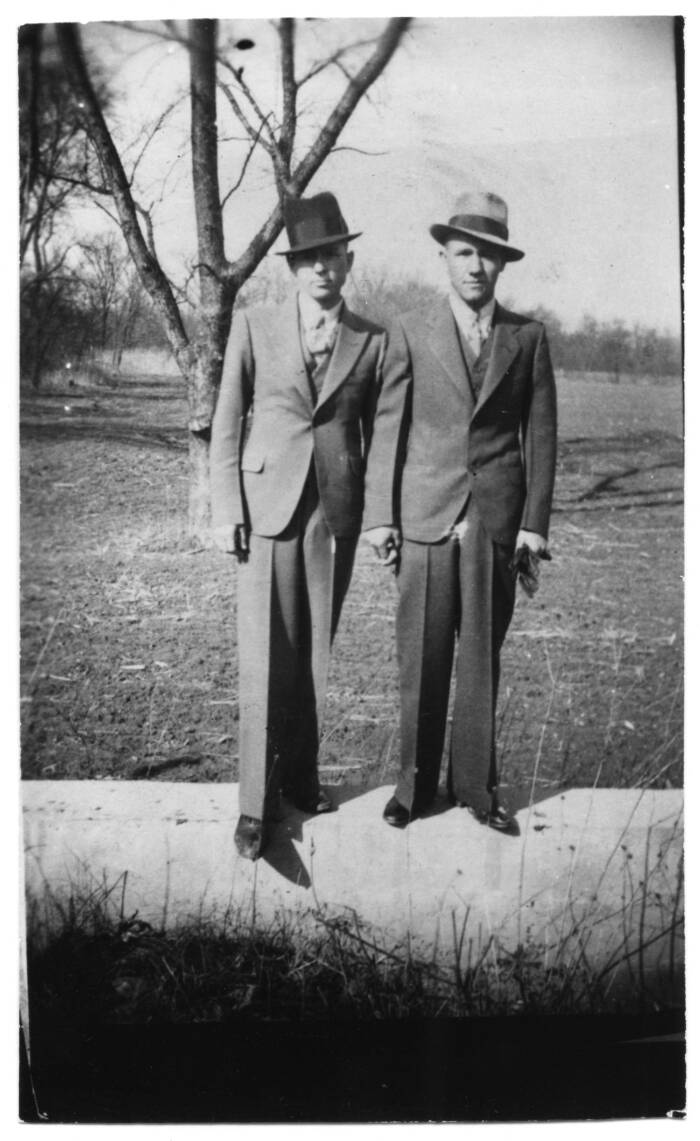
Dallas Municipal ArchivesClyde Barrow and Raymond Hamilton, a member of the Barrow Gang who was later sentenced to death.
Soon, the “rattlesnake” would return to a life of crime.
Clyde Barrow And Bonnie Parker’s Crime Spree
At first, Clyde Barrow tried to escape his criminal past. He even found work at a glass company in Dallas. But Clyde was allegedly harassed by police so much while he was working that he eventually lost his job.
“Mama, I’m never gonna work again, and I’ll never stand arrest, either,” Clyde purportedly told his mother. “I’m not ever going back to that Eastham hell hole. I’ll die first! I swear it, they’re going to have to kill me.”
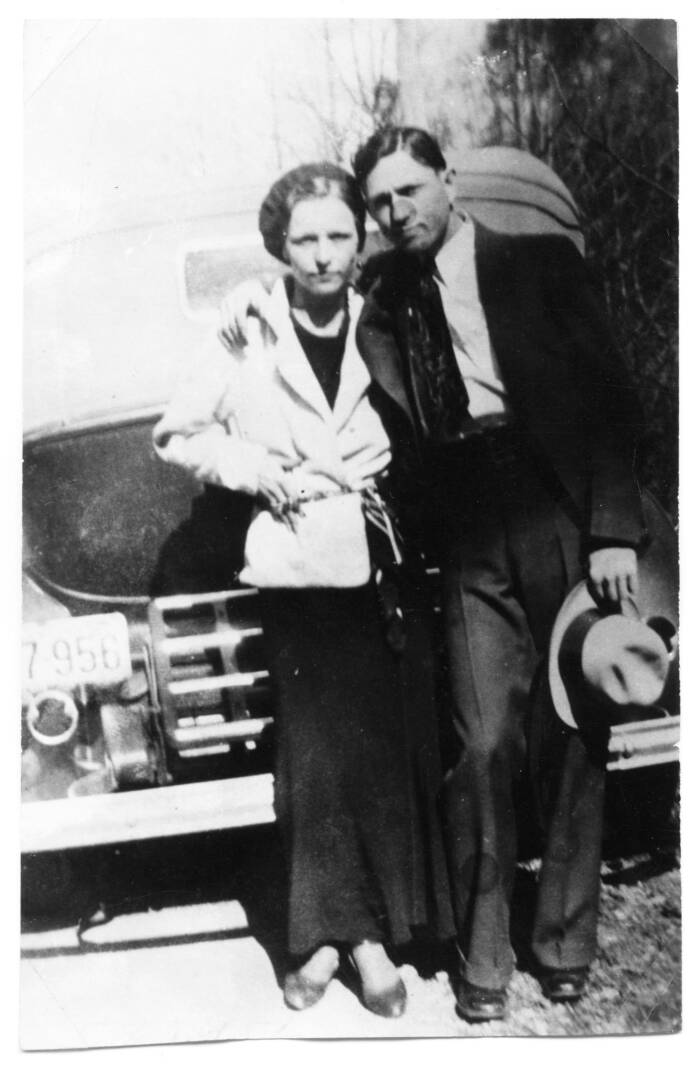
Dallas Municipal ArchivesClyde and Bonnie in an undated photo.
So Clyde Barrow went back to his life of crime. And he brought Bonnie with him.
As the FBI reports, Bonnie and Clyde formed the Barrow Gang, which included Clyde’s brother, Buck, and Buck’s wife, Blanche Barrow. They soon started robbing banks and small businesses, bold crimes that caught the attention of the media. And it soon became clear that they were willing to murder anyone who tried to stop them, especially police officers.
In April 1933, their infamy increased after a bloody shoot-out in Joplin, Missouri. Not only did the shoot-out leave two law enforcement officers dead, but Bonnie, Clyde, and their gang also left a number of items behind, including personal photographs and one of Bonnie’s poems.
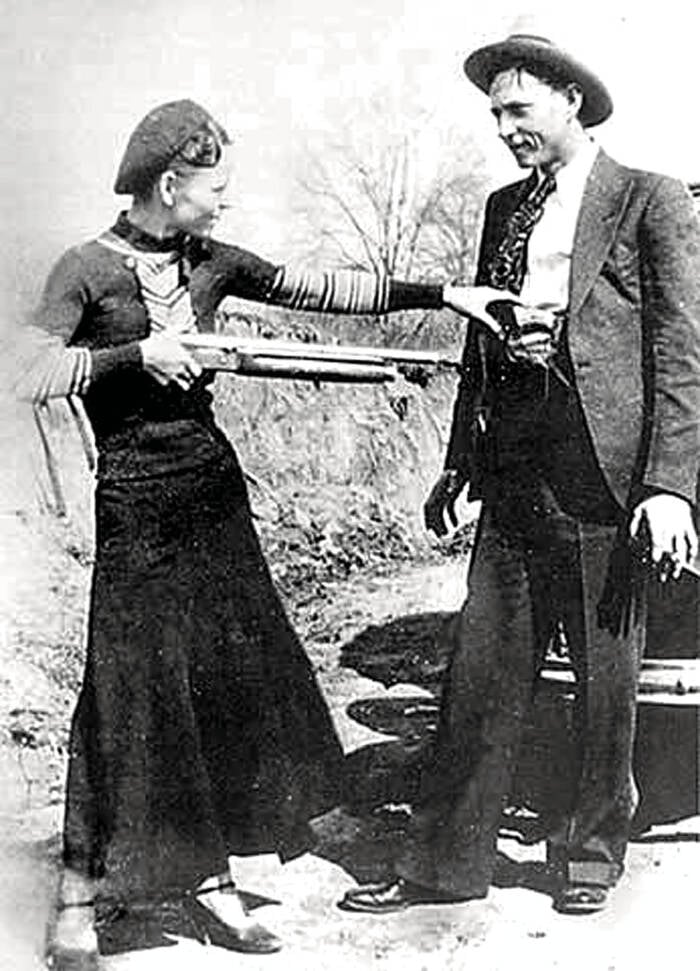
Public DomainOne of the photos recovered by investigators after a shoot-out between Bonnie and Clyde and law enforcement.
The poem, entitled “The Story of Suicide Sal,” ominously tells the story of two doomed lovers living a life of crime. It reads, in part:
“There I fell for the line of a henchman,
A professional killer from Chi;
I couldn’t help loving him madly;
For him even now I would die.”
The foreboding sentiment of Bonnie’s poem soon became very real. In July 1933, police caught up with the gang in Platte City, Missouri and chased them to Dexfield Park, Iowa. Though Bonnie Parker and Clyde Barrow were able to avoid being captured, Buck was fatally wounded and Blanche was arrested.
After another narrow escape in Dallas — and more robberies along the way — Bonnie and Clyde made it to Waldo, Texas, in January 1934, where they freed a number of men from prison. One of the men, a convict named Henry Methvin, joined up with the gang on their crime spree.

Public DomainHenry Methvin joined up with the gang in 1934, after Bonnie and Clyde helped him and others escape from prison. But his association with the gang would ultimately lead to Bonnie and Clyde’s death just months later.
But the authorities were in hot pursuit. And they’d soon track down Clyde Barrow and Bonnie Parker in a rural corner of Louisiana.
The Bloody Demise Of Clyde Barrow And Bonnie Parker
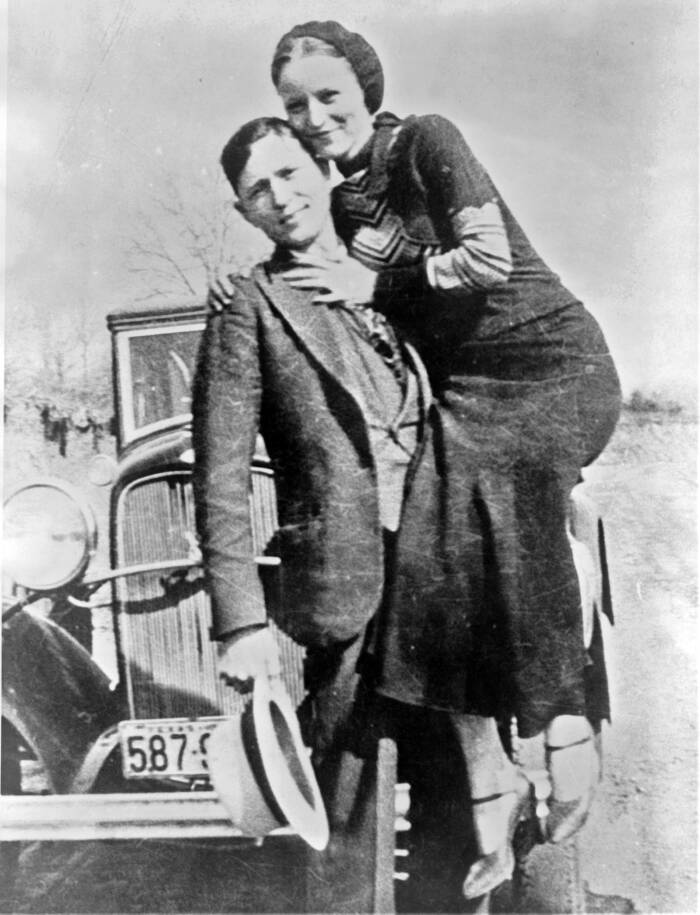
Public DomainClyde Barrow and Bonnie Parker in a photo taken before their grisly death.
Investigators, including FBI agents and former Texas Ranger Frank Hamer, learned that Bonnie Parker and Clyde Barrow were near New Orleans in April 1934. The Methvin family lived in the area, and authorities soon made a deal with Methvin’s father: If he helped them, his son would be granted a pardon.
On May 23, 1934, a posse of six lawmen put their plan into action. As Methvin’s father stood with his truck between Gibsland and Sailes in Bienville Parish, Louisiana, investigators hid in the bushes nearby. Eventually, Bonnie and Clyde’s stolen Ford V8 came rumbling down the road. As investigators had hoped, the outlaws pulled over to see if Methvin’s father needed a hand — or perhaps to ask for his help with something.
The posse didn’t wait. They opened fire on the duo, immediately killing Clyde Barrow with a shot to the head. As Bonnie screamed, the lawmen continued to shoot, eventually firing a total of 130 rounds into the car. When the smoke cleared, Bonnie and Clyde were dead. Clyde was 24; Bonnie was 23.

Public DomainThe police fired 130 rounds at Bonnie and Clyde, killing them both.
“Each of us six officers had a shotgun and an automatic rifle and pistols,” the officers later said. “We opened fire with the automatic rifles. They were emptied before the car got even with us. Then we used shotguns.”
The officers continued: “There was smoke coming from the car, and it looked like it was on fire. After shooting the shotguns, we emptied the pistols at the car, which had passed us and ran into a ditch about 50 yards on down the road. It almost turned over. We kept shooting at the car even after it stopped. We weren’t taking any chances.”
Both Bonnie and Clyde were shot over a dozen times. Though the official report states that Bonnie Parker had been shot 26 times and Clyde Barrow 17 times, modern research suggests that they’d been shot more than 50 times each.
The deceased criminal couple soon became the subject of grisly fascination. Passionate crowds of people descended on the scene of their death and tried to grab a piece of history — one even tried to cut off Clyde’s ear — and the story of their demise quickly made it to The New York Times.

Dallas Municipal ArchivesClyde Barrow in the morgue after his death.
Writing with dramatic flair, the paper reported: “Clyde Barrow, notorious Texas ‘bad man’ and murderer, and his cigar-smoking, quick-shooting woman accomplice, Bonnie Parker, were ambushed and shot to death today in an encounter with Texas Rangers and Sheriff’s deputies… The law had settled its score with Barrow and his quick-shooting woman accomplice.”
By the time they died, Clyde Barrow and Bonnie Parker were believed to have committed 13 murders and numerous robberies and burglaries.
Clyde Barrow’s Enduring Legacy As An Infamous Outlaw
After his death at the age of 24, Clyde Barrow was laid to rest in Western Heights Cemetery in Dallas near his brother, Buck. He and Bonnie purportedly wished to be buried together, but Bonnie’s family didn’t allow this, so she was interred elsewhere in Dallas, at Crown Hill Memorial Park.
Though it’s been almost a century since they died, the story of Bonnie and Clyde continues to fascinate. Not only did their bullet-riddled car become a popular attraction (it toured the country before finding a home at Whiskey Pete’s Hotel and Casino in Primm, Nevada), but the story of their star-crossed meeting, criminal exploits, and bloody demise remains potent.
In 1967, they made it to the silver screen with the film Bonnie and Clyde, starring Faye Dunaway and Warren Beatty. More recently, in 2019, Netflix took on their story with the movie The Highwaymen.
For movie audiences, their story is an adventure. For law enforcement, it was a nightmare. But for Clyde Barrow and Bonnie Parker, it was a love story, albeit an ill-fated one. Perhaps Bonnie said it best when she wrote:
“Some day they’ll go down together / And they’ll bury them side by side / To few it’ll be grief / to the law a relief / but it’s death for Bonnie and Clyde.”
After reading about Clyde Barrow, discover the stories of infamous outlaws who wreaked havoc across the Wild West. Then, learn about the Lonely Hearts Killers, the murderous couple who preyed on lonely women.





